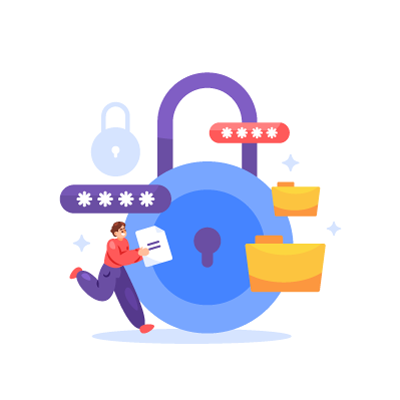Skype, once a popular and beloved video chat platform, has reached the end of its rope (in a manner of speaking). Microsoft is discontinuing the 20-year-old communication application, instead focusing its efforts on Microsoft Teams. The last update to Skype will be on May 5, but that doesn’t change the impact Skype had on the development of modern communication tools.
-
Contact Us At
-
E-Mail Us @
-
Need Help Now?
Clearmind Technology, Inc. Blog
The modern business is more technologically driven than ever before, but there are some out there who haven’t embraced the benefits of technology and have alternatively chosen to stick with their more analog, tried and true methods. In today’s blog, we’ll discuss why technology is important and how to get started if your business is stuck in the 20th century.
We will always reinforce how critical it is for everyone in any workplace to have a grasp of cybersecurity best practices, regardless of their role or responsibilities. However, based on a survey conducted by UK-based cybersecurity firm Ramsac, this baseline is not being met by a long shot.
Why do we say this? Simple: this survey revealed that one in three adults failed a cybersecurity test designed for 11-year-olds.
Running a business is basically a never-ending series of potential disasters just waiting to happen. Some are easy to fix, change a process here, tweak a strategy there—but others? They can completely derail your operations if you’re not prepared. That’s where smart technology steps in to save the day.
Let’s look at some nightmare scenarios that could spell disaster unless you have the right IT in place.
The entire purpose of modern IT is to improve the processes that work requires us to do. Today, we wanted to address a few business priorities—productivity, cybersecurity, and accessibility—that the right tech can help you accomplish, explicitly exploring how different tools can contribute to your success.
Tech can be a real pain for small businesses, especially if you don’t have a dedicated IT person handling everything. Most businesses have someone who sort of knows their way around tech, but for a small team, that’s a lot to put on one person. That’s where managed IT services come in. It’s used not just for its convenience but because it actually makes a business owner’s life easier in ways they might not even realize.
You don’t want to get spammed; nobody does. Unfortunately, it happens to EVERYONE, and it’s just getting worse. All this unwelcome correspondence happens over the phone, through email, and especially on social media. In today’s blog, we’ll talk a little bit about how social media puts users at risk and what you can do to keep that risk from becoming a problem for you.
New technology is always a bit intriguing. It can also be scary for some. Business owners typically only see the cost, even if it presents solutions to their organizational problems and can err on the side of caution as to not too much strain on their budget. There are a couple of really cutting-edge technologies businesses can use today that can help them confront problems they have. Let’s take a look at them in today’s blog.
With remote work remaining popular, employees can benefit from flexibility and work-life balance, but at the cost of certain challenges on the business side. The big one is security, as your network ends up spread out across multiple locations rather than siloed in-house. Here are three rules you should consider when planning out how to approach remote work.
All it takes is a couple minutes on social media to see all of the “outrage” over whatever is happening in the world at the moment. Before you know it, you’re invested in some issue that you’ve never heard of up until that moment, and you’re left wondering, “Why?” Today, we want to explore this phenomenon of how social media brings you to care so deeply about things that are rarely actually your problem (and why it can be so harmful).
Think about the apps you use daily—Google Drive, Netflix, Spotify, even Instagram. All of these run on cloud-based services, which basically means they store and process everything online instead of relying on one physical device. Businesses, big and small, are making the same shift because, honestly, it just makes sense. Let’s take a look at why you should be looking to use cloud services in your business.
Artificial intelligence is seen practically everywhere now, including at the top of Google’s recommended search results. If you don’t want these generated results appearing whenever you perform a search, there are ways to turn them off. In fact, you might really want them turned off… especially since they’re found to be wrong, depending on where the AI pulls this information from.
Text messages are great. They’re a quick and effective means for us all to communicate.
Unfortunately, this does bring some downsides, too… namely, they’re a relatively simple means for a scammer to spread their attacks. Let’s discuss why this is so dangerous and how you can identify and avoid these threats.
Mobile device security is critical for modern businesses, especially as they play a more prominent and significant role in daily operations. However, data loss is also a problem, regardless of the source… including if a device is wiped via a reset.
While Apple has offered a feature to prevent this for the past year or so, Android 15 now provides the same, referred to as Identity Check. Let’s explore how it works, and how to enable it for yourself.
When hackers steal data, they don't just sit on it. Sometimes they delete it, but most of the time, they sell it or use it for illegal activities. A lot of this stolen data ends up on the Dark Web, a hidden part of the Internet where people do shady things. That's why it's so important to keep an eye on the Dark Web to protect your business.




















